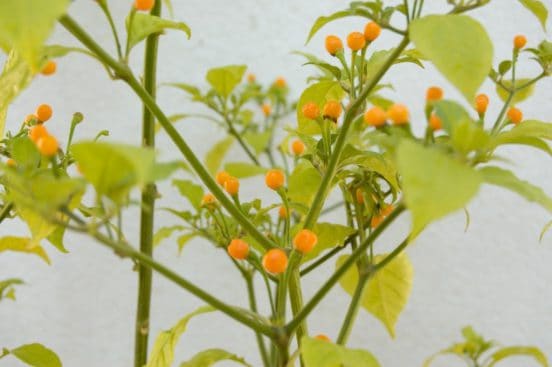In the world of spices, the chilli is a peculiar thing: It rules supreme, spread around the world as it has become, punch that it packs.
And at the same time, for the punch it packs and for the same ease with which it can be grown in so many a place – the very precondition for its global spread – it has typically become the poor person’s pepper. Being the spice of the poor locals, it couldn’t possibly be anything special.
Nowhere is this more visible than in South America, where several of the domesticated species of Capsicum had their origins (and where the whole genus probably originated). They were domesticated there, they exist in great variety – and it’s only recently, with the rise of interest in local foods, that they are finally gaining in international stature. Before, the use of chilli was just a local, often indigenous, thing. Therefore, it was not considered of any great value.
One recent case showing this: Brazil and its peppers.

Sure, a chilehead may have heard that there are various chile peppers in Brazil. The Tello stela from Chavin de Huantar in the Andes, a religious object, shows chilli from the Amazon lowlands. Several unusual wild species of Capsicum occur only in Brazil.
Brazil and the ingredients one can only get in and from the Amazon have also, since the start of this millennium and thanks to Alex Atala of D.O.M., recently gained some attention. (Highly recommended: this NPR podcast about him. For something a bit older, try this article in Gourmet.)
A simple awareness of the importance of chilli in the cooking, the way one just knows that paprika is typically Hungarian, for example, is missing, though.
What is Brazilian cuisine, anyways? And what role does the chilli play in it?
The only – but best – note where I’ve recently come across interest: Der Standard, one of Austria’s bigger newspapers, presented impressions from Brazil… and among them is a note regarding Mara Salles of the restaurant Tordesilhas in Sao Paulo and her “hobby horse” of collecting the country’s chilli – see the picture they put up here.
The still-better illustration: Chile. For two spicy products, in fact – only one of which is chilli.

The chilli: caciocavra. Or rather, the smoked paprika powder made from it, chile merkén.
The other spice: chiloé pepper, which is the fruit of Drymis winteri, a genus I will need to talk about in the discussion of hot spices other than chilli.
Both are all the more interesting, and telling, as they have apparently been used for a long time, but “only” by indigenous populations. And so, (Native American) indigenous spices as they have been, they had been considered a backwards and un-modern thing to use. Until, that is, when the search for the indigenous and authentic in cooking became stronger and the same type of ingredient became something sought-after.
It is the same process that has also been happening with other South American indigenous foods and that has led to the surge in interest in and popularity of the “ancient superfoods” of quinoa and amaranth, and more recently chia seeds.
It is a fascinating process, too, coming not a second too soon. Many traditions, of old crops and varieties, and of the products and foods made of them, are increasingly being lost in favor of the “modern” and “advanced.” But with that, we are losing a diversity that is fascinating, promising, and indeed essential, for fun and for the future.

Leave a Reply
You must be logged in to post a comment.